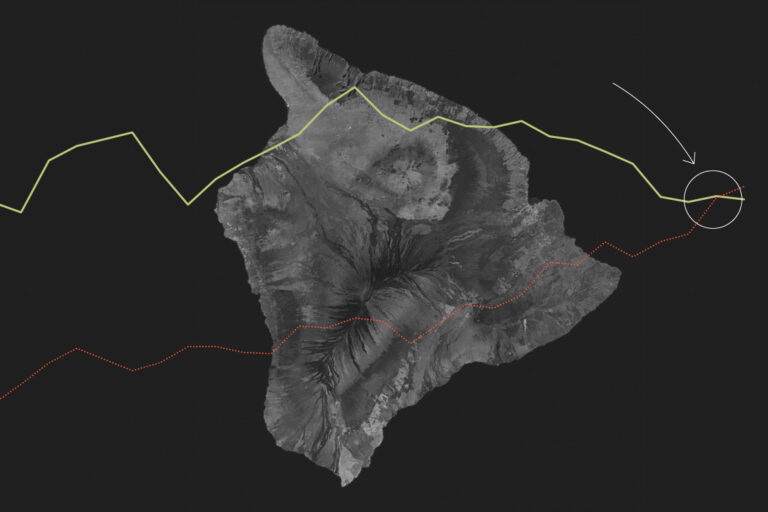Hawaii economists predict that ten years from now, the state’s demographics will take an ominous turn, with more deaths than births.
But a former university demographer who lives in Hilo realizes that at least the Big Island has a future.


Karl Eschbach, a former Texas state demographer, said the Big Island is already experiencing what demographers call “natural population decline.”
As shown below, the Hawaii Department of Business, Economic Development and Tourism’s Research Division projects that state-wide natural decline will begin around 2035.
Natural decline is different from population decline. In fact, the state’s overall population has been declining for years despite natural increase, with more people being born than dying. Natural increase has cushioned Hawaii from the effects of more people leaving the state than moving in.
Natural attrition across the state will further exacerbate Hawaii’s population decline.
Eschbach said the cause of the Big Island’s natural decline appears to be that older people and retirees are moving to the island, while young people are leaving and not returning. Losing people in their prime working years and childbearing age is a double whammy. People leave, young children leave too. Additionally, unconceived offspring are born and raised elsewhere.
Carl Bonham, executive director of the University of Hawai’i Institute for Economic Research, said there are other factors at play when it comes to natural decline. Birth rates began to decline precipitously after the Great Recession, and only recently, the COVID-19 pandemic has shown an increase in deaths.
“Deaths have spiked during the pandemic, but the pace will probably slow,” he said.
In any case, a decline in the working-age population is undesirable for a variety of reasons. Fewer people working can lead to a lower tax base, which is no longer replenished by retirees living on untaxed income. This means less income for social safety net programs, which are likely to be in greater demand as the population ages.
Oahu has not yet crossed the line of natural decline, said Eschbach, a former professor at the University of Texas Medical Branch in Galveston. But that may just be the military’s fault. The military faces the double whammy of having a positive population on Oahu. As shown in the population graph below, young military personnel are coming here with their spouses and children, creating a growing youth population.
Such an image is called a population pyramid because it should look like a triangle with a wide base for young people and a small tip for older people. The image on the left above shows the population of Oahu with and without military personnel and their families.
The population pyramid on the neighboring island looks like a cylinder with a pointed top. Oahu has many young adults, a bulge in the middle, and a widening base for infants.
But that’s largely due to the military presence on Oahu, Eschbach points out. If you remove the military from Oahu’s population, the shape of Oahu’s population pyramid begins to resemble the population pyramids of neighboring islands. However, removing the army from the neighboring island’s pyramid will make little difference.
“The military is basically a source of youth migration,” Bonham said.
Bonham said the loss of the state’s tax base is just one result of the trend toward a younger population. It also means a loss of labor, which means a loss of economic activity. The only way to maintain economic growth is to develop a larger workforce or increase productivity, Bonham said.
Artificial intelligence could theoretically fill the gap by increasing productivity in Hawaii’s tourism economy, Bonham said. Think robot hotel and restaurant workers. But he said a better solution for Hawaii and the U.S. as a whole would be changes to immigration policy that would make it easier for foreign workers to immigrate.
Hawaii’s economy is not the only one at risk. A recent White House report points to a declining trend in national birthrates and predicts that, absent an increase in net immigration to the United States, the country’s population will also begin to decline by 2040.
“This is very likely to put pressure on politicians to fix a broken system,” Bonham said.
“Hawaii’s Changing Economy” is supported by a grant from the Hawaii Community Foundation as part of the CHANGE Framework project.


